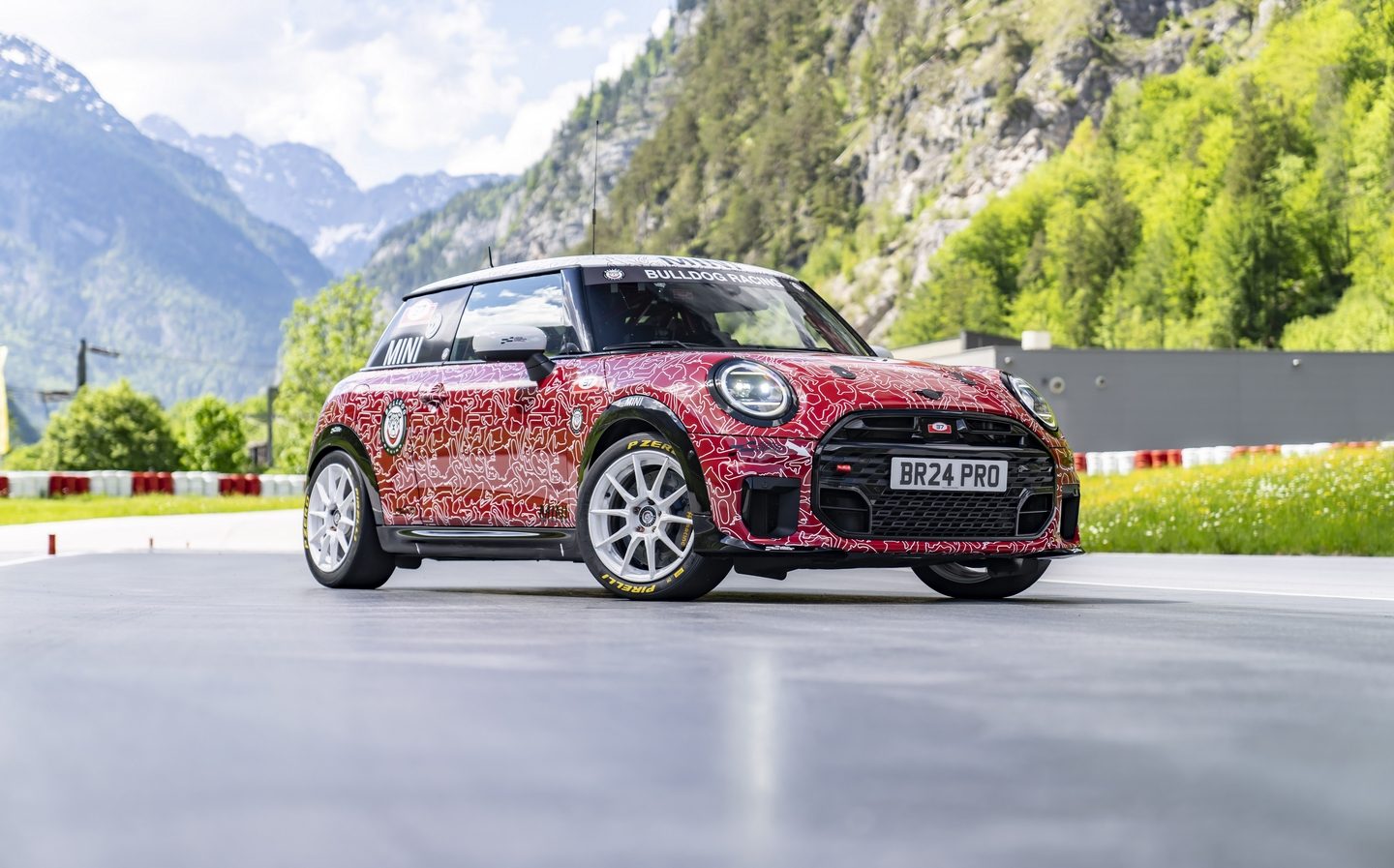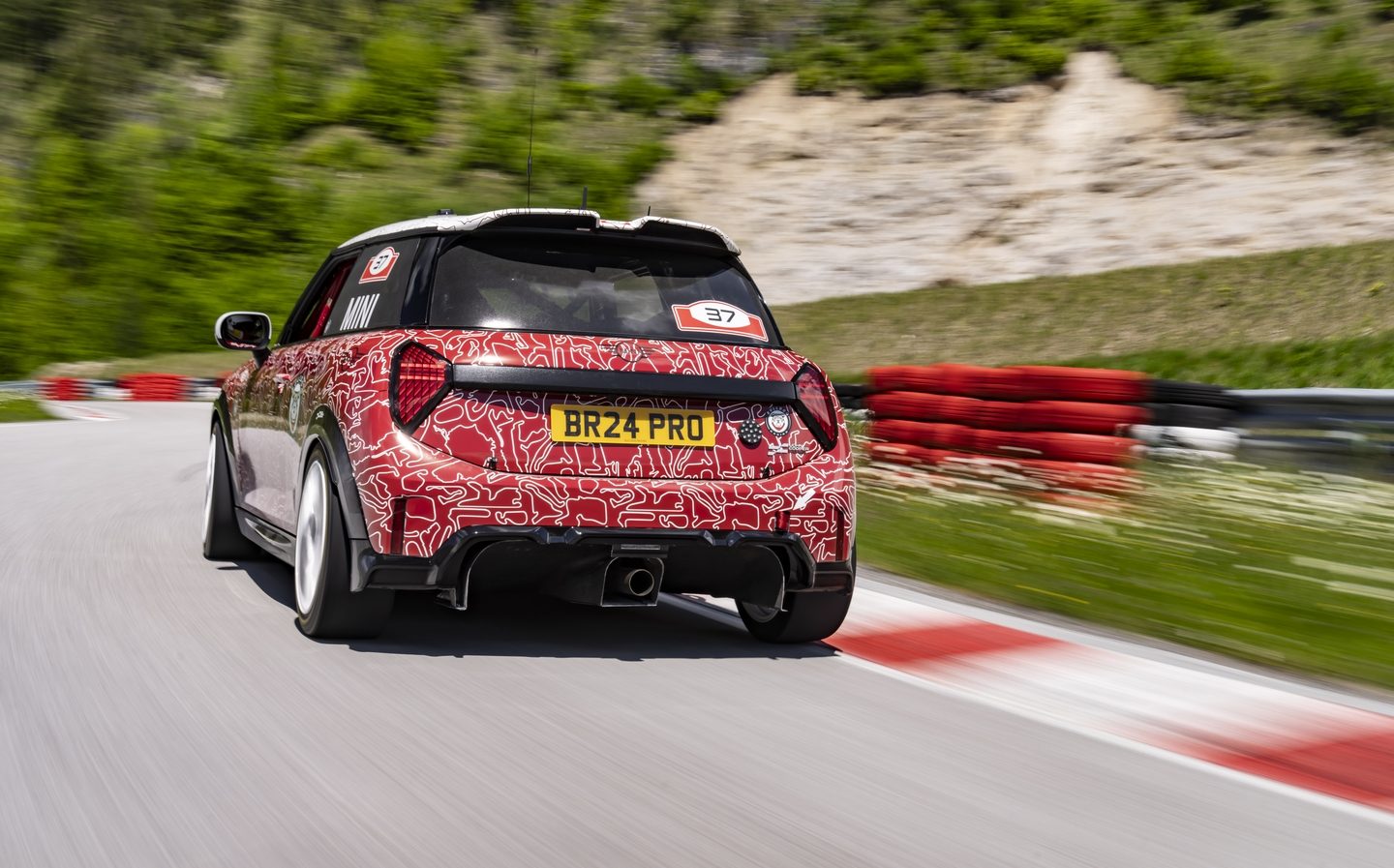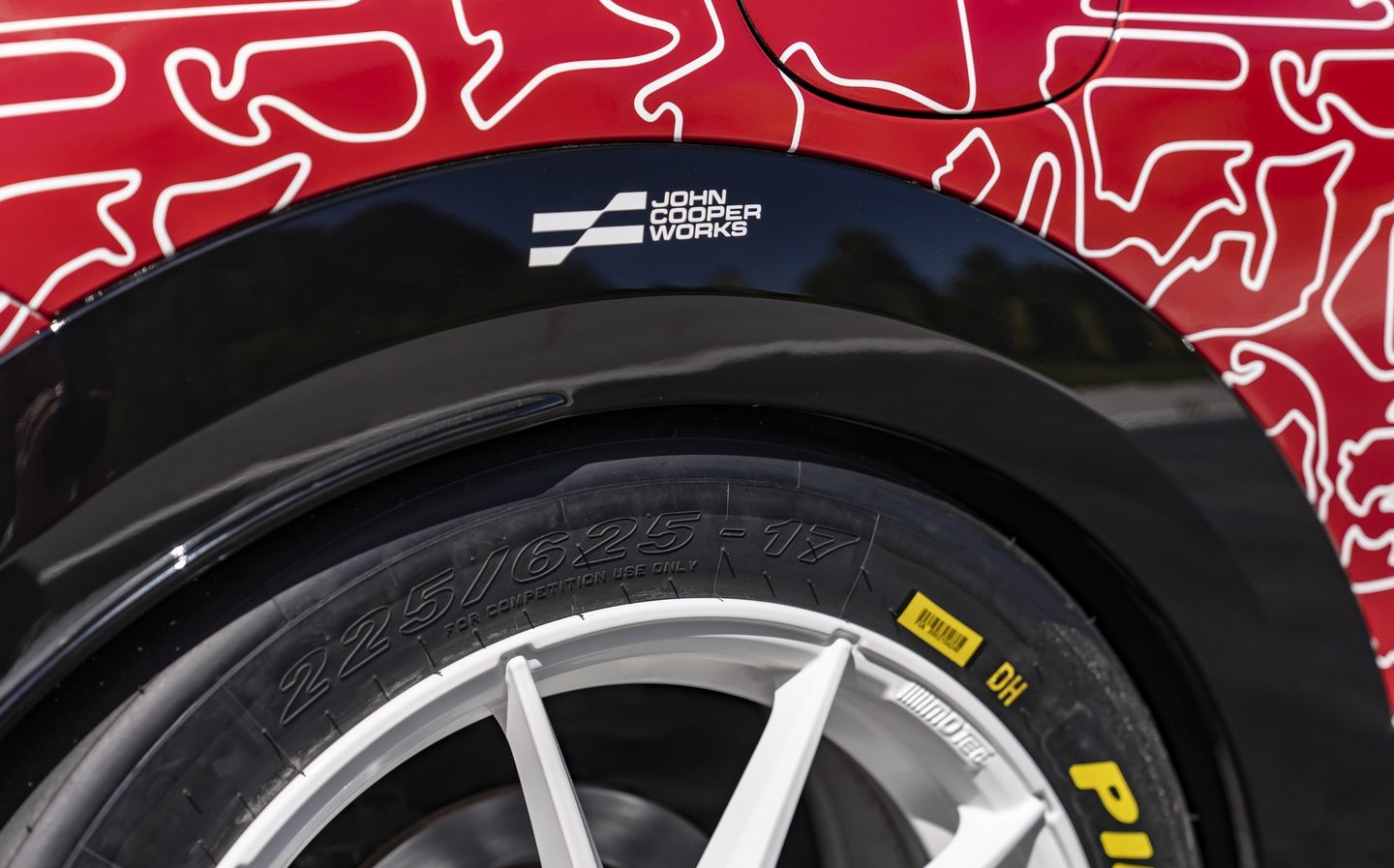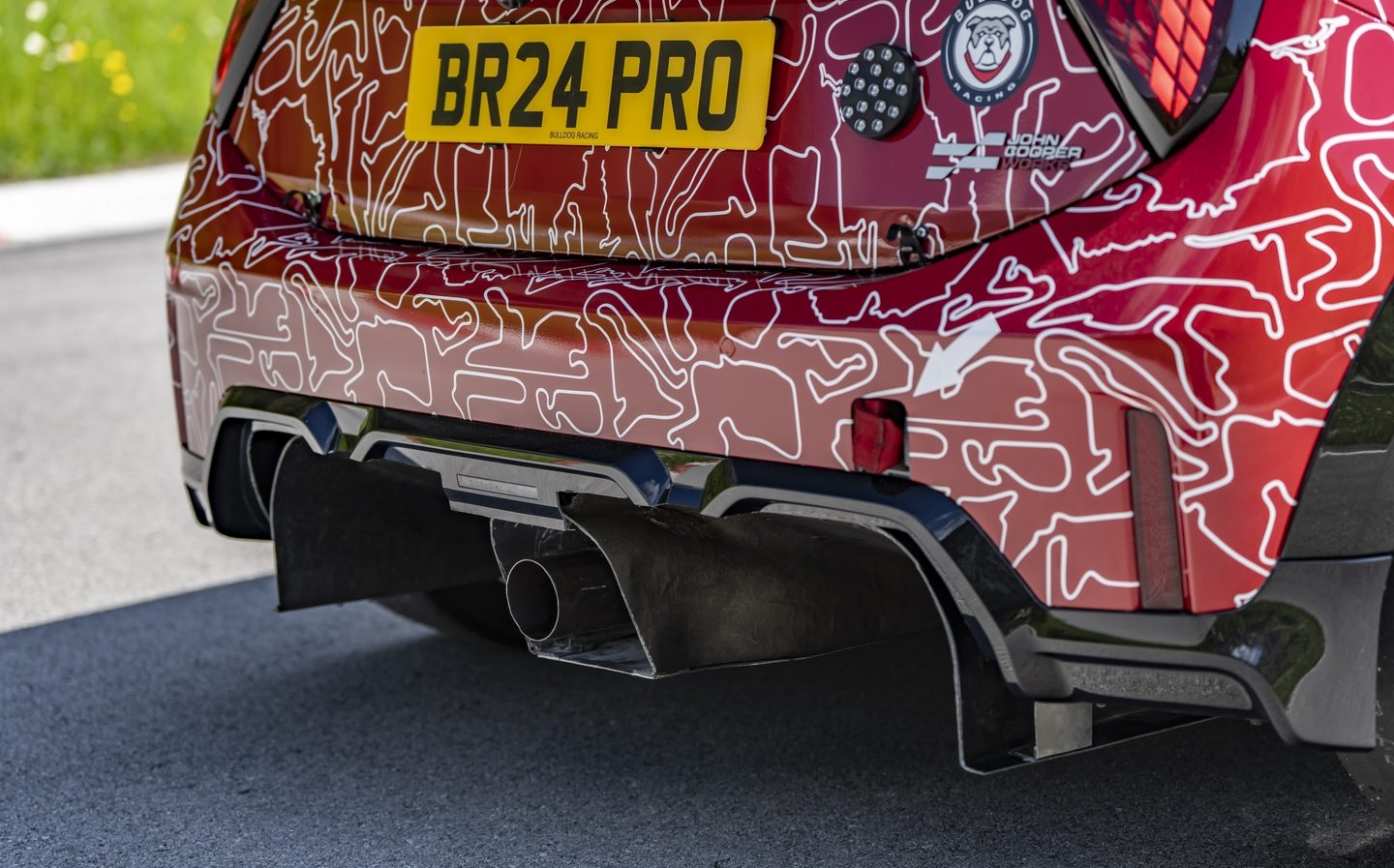New Mini John Cooper Works revs up for Nürburgring 24-hour race debut
Choose from petrol or electric power for first time
The original Mini was an unlikely contender in motorsport over the years, but it earned some remarkable giant-killing results in its time.
Now, with the BMW-owned marque celebrating the 60th anniversary of Paddy Hopkirk’s stunning win at the Monte Carlo Rally in a Mini Cooper S, it is marking the occasion with a semi-works entry in the gruelling Nürburgring 24 Hours endurance race taking place over the weekend of June 1-2.

The car in question is the forthcoming Mini John Cooper Works (JCW), the new hot hatch flagship of the recently-launched fourth-generation Mini Cooper. While we’re still a few months away from the JCW’s full unveiling in the autumn, Mini is entering a lightly-disguised prototype of the new JCW in one of the myriad classes that make up the grid of 100-plus cars that participate at the twice-around-the-clock Nürburgring race.
Turbocharged petrol racer
Although Mini hasn’t released any details on the JCW’s performance, we know it will be entered into the “SP 3T” class for competition vehicles fitted with a sub-2 litre turbocharged engine. That means it’s possible the new JCW will use a development of the petrol unit used in the previous-generation hot hatch, which put out 228bhp in JCW guise and over 300bhp in the limited-production JCW GP model.
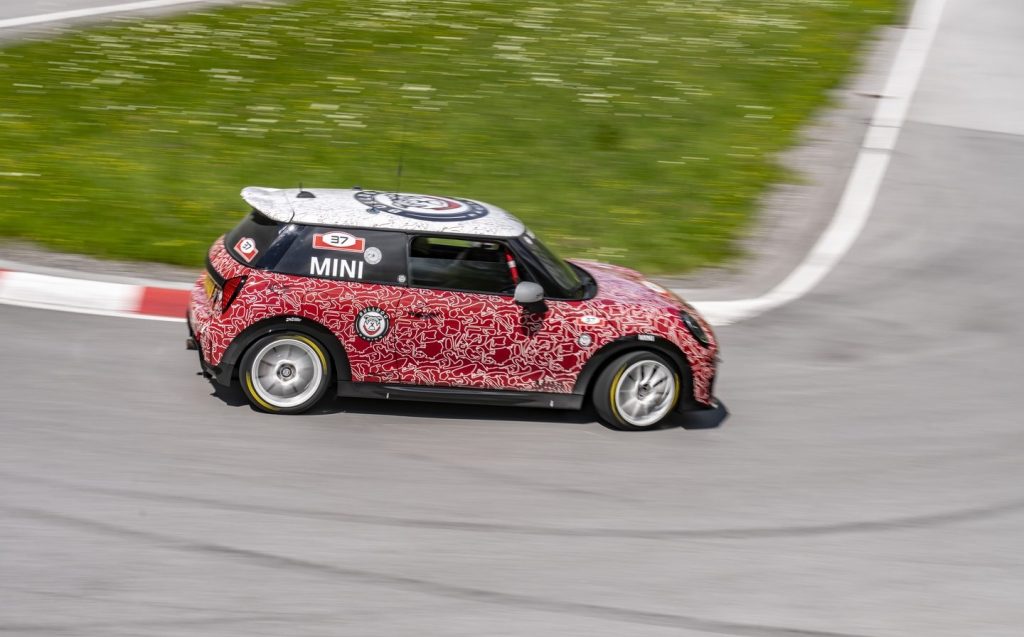
Pictures of the JCW racer released by Mini show the colour scheme inspired by the 1964 Monte Carlo Rally-winning Cooper S, with red bodywork and a white roof.
The colours are broken up by graphics that pay homage to circuits across the globe in a style created by the Mini Design Team, including outlines of circuits such as La Sarthe, venue of the Le Mans 24 Hours in France, as well as Spa-Francorchamps in Belgium and the epic Nürburgring Nordschleife.
Completing the look are window graphics featuring the number 37, the racing number of Hopkirk’s winning car.
Hints at new Mini JCW design
Although the racing car features white alloy wheels wrapped in Pirelli P-Zero slicks, these wheels are unlikely to be the final design for the production model. The gloss-black wheelarches and side skirts are also to be confirmed, but the chequered grille design with additional front air intakes, which are designed to feed cooling air to the engine and brakes, are notable.
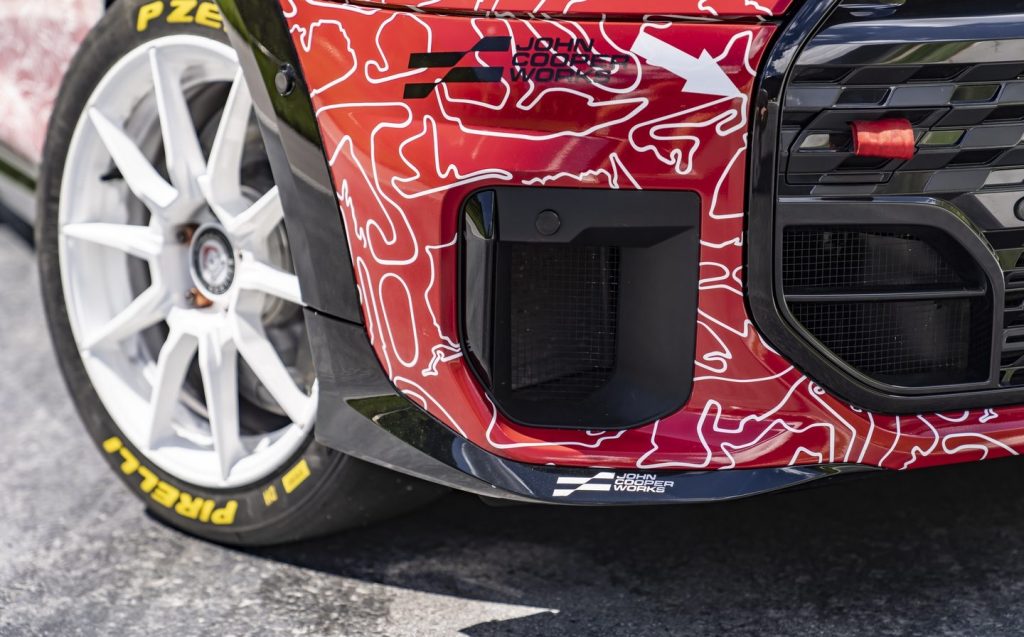
At the back, there’s a prominent roof spoiler, while a centre-exit exhaust is also fitted, although again the production model is likely to have a different design to the racing version.
Of course, with its stripped-out interior, racing seat and full roll cage, the competition JCW doesn’t give any clues about the final production model’s cabin .
First-ever electric JCW model on the way
One thing we do know is that this petrol-powered JCW will be joined by a pure-electric version for the first time, but we’ll have to wait until the autumn for any further information on that model. It should bring to three the number of electric Minis offered, sitting above the Cooper E and Cooper SE.
The Nürburgring 24 Hours is one of the most intense endurance races on the motorsport calendar. Competitors from across the globe descend on the Eifel mountains track to test their skills in cars ranging from top flight GT3 racers, entered by works teams such as Porsche, Aston Martin, BMW, Mercedes and Audi, to production-based vehicles including Mini’s entry. There’s even a mid-1980s Opel Manta coupé that has become a staple of the grid and a fan-favourite over the years.
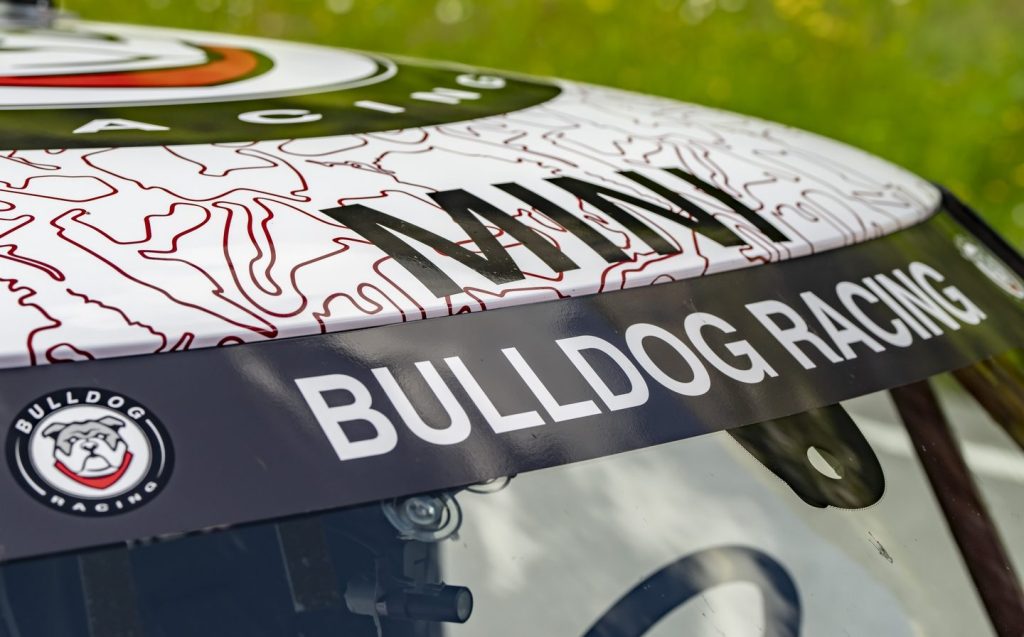
The Mini JCW is being campaigned by the locally-based team Bulldog Racing, and it will be one of two Minis the outfit is entering into the 24-hour race. The other is a previous-generation John Cooper Works with a manual gearbox, a car which earned a class podium in the 2023 running of the event.
Who was John Cooper?
Mini has used the “John Cooper Works” badge on the hottest versions of the BMW-era supermini ever since the first generation arrived at the start of the 21st century, but the Cooper association with Minis goes right back to the Austin Mini Cooper and Morris Mini Cooper of 1961.
John Cooper was co-founder of the Cooper racing team that pioneered the rear-engined layout in Formula One, and his cars were driven by the likes of Stirling Moss, Jack Brabham and Bruce McLaren.
Cooper was a friend of Mini’s creator Alec Issigonis and saw the competition potential of the little car. He developed performance parts for the original Mini from his garage in Surrey, which propelled it towards giant-beating competition success.
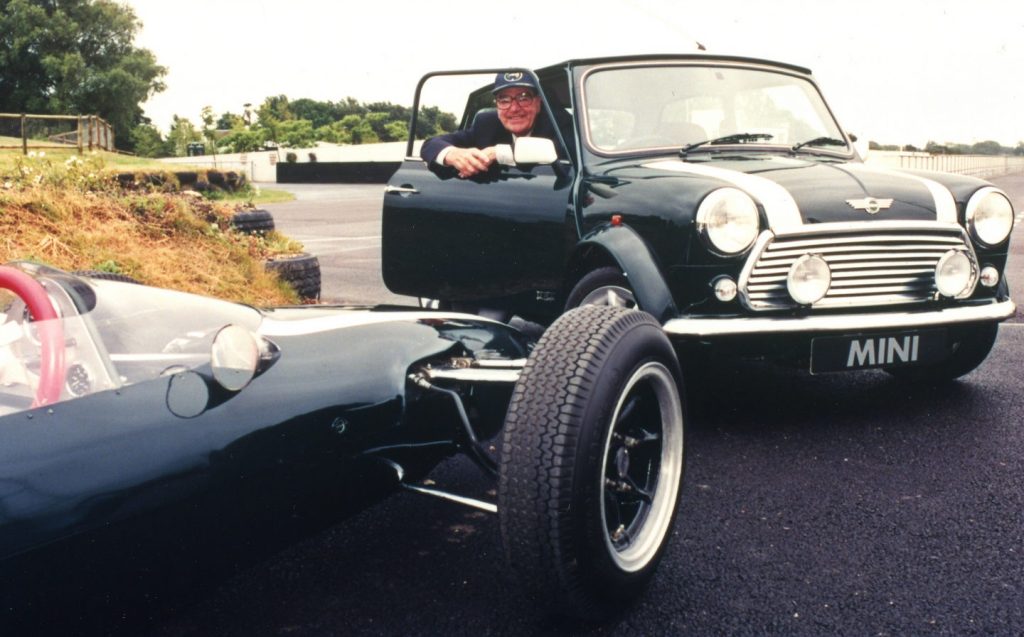
Fast forward to 2002, two years after John’s death, and John Cooper Works was founded by his son Michael to fit performance parts to BMW’s new Mini. The German firm was so impressed by the company’s work that any car with JCW upgrades retained its original factory warranty.
BMW acquired the rights to the John Cooper Works name in 2007 before buying the company outright in 2008.
Related articles
- If you found news on a the new Mini JCW interesting, you may want to read our review of the new electric Mini Cooper SE
- You may like to check out the new Mini Countryman JCW
- Or read more about Mini’s built-in video gaming system
Latest articles
- Five best electric cars to buy in 2025
- Should I buy a diesel car in 2025?
- F1 2025 calendar and race reports: The new Formula One season as it happens
- Zeekr 7X AWD 2025 review: A fast, spacious and high tech premium SUV — but someone call the chassis chief
- Denza Z9GT 2025 review: Flawed but sleek 1,062bhp shooting brake from BYD’s luxury arm
- Extended test: 2024 Renault Scenic E-Tech review
- Best-selling cars 2025: The UK’s ten most popular models of the year so far
- Audi A6 Avant 2025 review: Trusty executive estate ticks expected boxes, and there’s still a diesel option
- Keir Starmer eases pressure on carmakers to sell EVs in response to ‘global economic headwinds’


